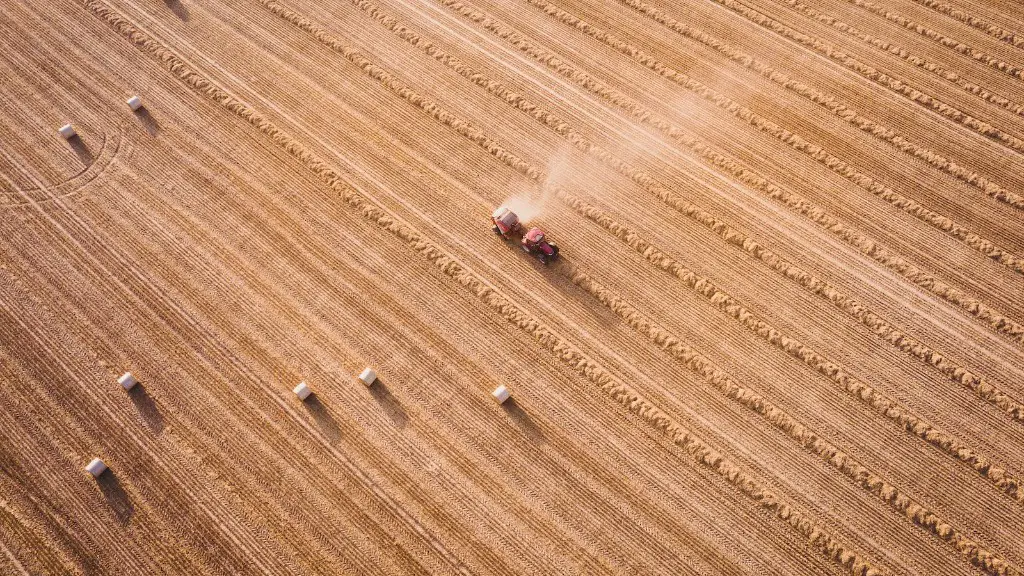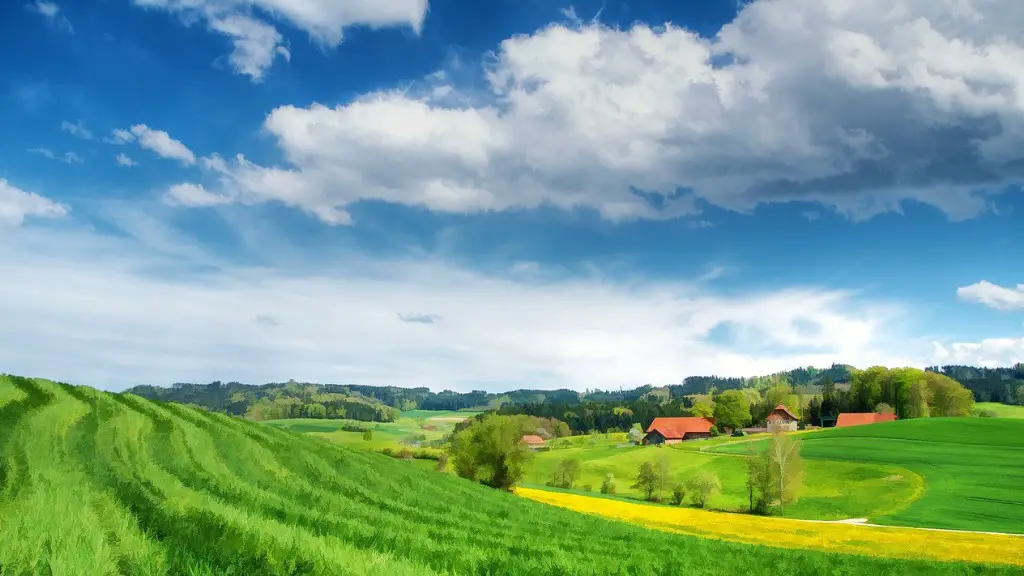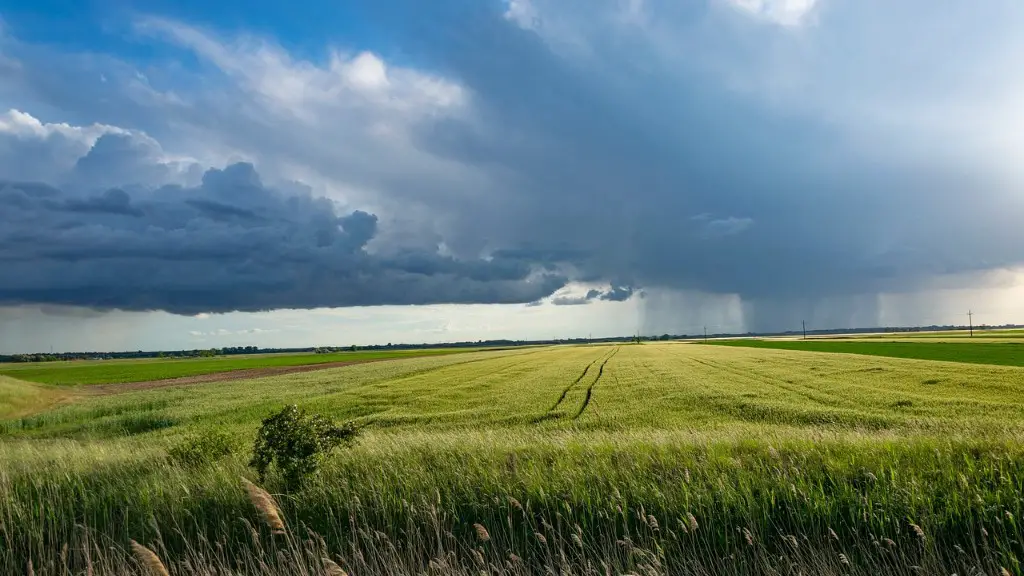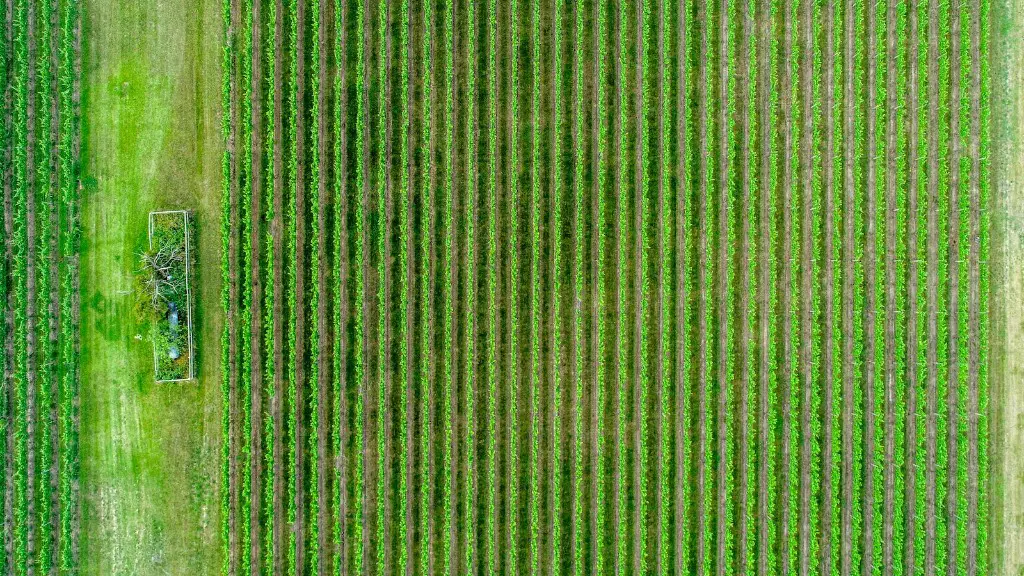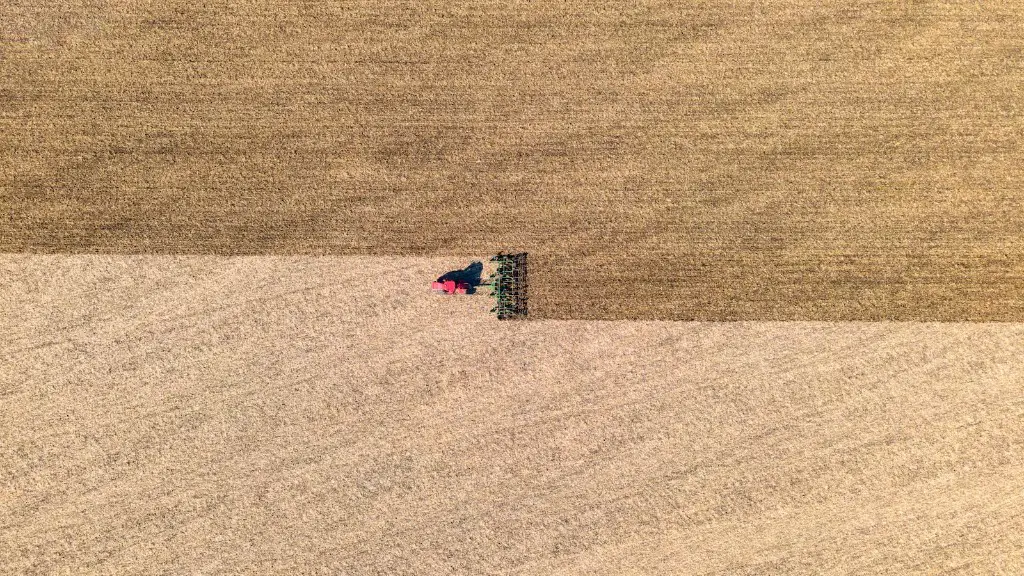Animal agriculture is one of the leading contributors to global climate change, contributing to greenhouse gas emissions, deforestation, and other environmental issues. Scientists estimate that animal agriculture contributes to 14.5 percent of all global greenhouse gas emissions each year. An estimated 70 percent of the world’s agricultural land is used for animal production, leading to the release of large amounts of carbon dioxide, methane and nitrous oxide, which leads to global warming. Additionally, animal agriculture also contributes to air and water pollution, soil erosion, soil depletion and the loss of biodiversity, which all have adverse effects on the environment.
The amount of fuel and energy used in animal agriculture is staggering. In order to transport and process food animals, large amounts of energy are required. This includes growing, harvesting, transporting and refining feed for animals, raising and managing farm animals, and using chemicals for processing animal products. As a result, animal agriculture is responsible for almost one-third of all energy used in the food system. It also wastes large quantities of natural resources, such as water and land, which are essential for global food security. Additionally, the electricity used to refrigerate the animal products has a huge environmental impact.
Deforestation is a major cause of climate change. Across the world, millions of hectares of forest are destroyed every year to create more land for raising animals. This deforestation contributes to global warming by releasing large amounts of carbon dioxide into the atmosphere. Additionally, deforestation adversely affects the world’s biodiversity, as it destroys habitats and pushes species to extinction. The loss of trees exacerbates the climate crisis, as trees absorb large amounts of carbon dioxide from the atmosphere.
Animal agriculture has a significant environmental impact from its production of greenhouse gases. Livestock production is responsible for nearly 20 percent of total greenhouse gases released into the atmosphere, making it a major contributor to climate change. Cattle, pigs, sheep and other farm animals release large amounts of methane, a potent greenhouse gas. Additionally, animal waste releases large quantities of nitrous oxide, another powerful greenhouse gas.
The health of the world’s oceans is also affected by animal agriculture. Factory farming leads to the discharge of large amounts of waste, antibiotics and other chemicals into rivers and oceans. As a result, this pollutes the ocean and contains diseases, endangering marine life and impacting the health of ocean ecosystems. An estimated 40 percent of all marine pollution is related to animal agriculture.
The world’s growing population is having a major impact on animal agriculture and climate change. As the population grows, demand for animal products, such as meat and dairy, increases. This leads to the production of more animals and the related increase in emissions. Additionally, animal agriculture is inefficient when it comes to its use of resources, so the more animal products that are consumed, the more resources are wasted, leading to an increase in emissions.
In conclusion, it is clear that animal agriculture has a major impact on the environment and climate change. Animal agriculture uses large amounts of energy, contributes to deforestation, releases large amounts of greenhouse gases, increases pollution levels, and wastes precious resources. As a result, reducing or eliminating animal agriculture is necessary to reduce global greenhouse gas emissions and combat climate change.
Greenhouse Gases and Animal Agriculture
Animal agriculture is responsible for nearly 20 percent of all greenhouse gas emissions, making it a major contributor to the global climate crisis. Cattle, pigs, sheep and other farm animals release large amounts of methane, a potent greenhouse gas, as well as nitrous oxide and carbon dioxide. This gas pollution ultimately alters the atmospheric balance, leading to global warming and climate change. Additionally, animal agriculture also contributes to air and water pollution, soil erosion, soil depletion, and the loss of biodiversity, which all have a detrimental effect on the environment.
Animal agriculture is particularly energy- and resource-intensive. Large amounts of energy are used to transport and process food animals, for activities such as growing, harvesting, transporting and refining feed for animals, and using chemicals for processing animal products. As a result, animal agriculture is responsible for almost one-third of all energy used in the food system. It also wastes large quantities of natural resources, such as water and land, which are essential for global food security. Additionally, the electricity used to refrigerate animal products is an additional source of emissions.
The world’s growing population is also having a major impact on animal agriculture and climate change. As the population increases, demand for animal products, such as meat and dairy, rapidly increases. This leads to the production of more animals and the related increase in emissions. Additionally, animal agriculture is inefficient when it comes to its use of resources, so the more animal products that are consumed, the more resources are wasted, leading to an increase in emissions.
Deforestation is also a major contributing factor to climate change. Across the globe, millions of hectares of forest are destroyed every year to create more land for raising animals. This deforestation contributes to global warming by releasing large amounts of carbon dioxide into the atmosphere. Additionally, deforestation adversely affects the world’s biodiversity, as it destroys habitats and puts species under threat.
By reducing or eliminating animal agriculture from our diets, we can have a major impact on the climate crisis. This could include increasing the consumption of plant-based foods, reducing the amount of animal products we consume, or eliminating animal products from our diets altogether. By reducing animal agriculture, we can reduce greenhouse gas emissions, pollution, and water and energy usage, ultimately making a difference in the climate crisis.
Animal Waste and Pollution
Animal agriculture is a major source of air, water, and land pollution. Livestock waste releases large amounts of nitrous oxide, carbon dioxide, methane, and other air pollutants into the atmosphere, ultimately inducing climate change. Additionally, factory farming is responsible for the discharge of waste, antibiotics and other chemicals into rivers and oceans, polluting water sources and endangering marine life. An estimated 40 percent of all marine pollution is related to animal agriculture.
Animal agriculture also contributes to soil erosion and degradation. Livestock activities erode large amounts of soil, and their waste pollutes the land and eventually enters rivers and water sources. As a result, this soil erosion leads to the release of large amounts of greenhouse gas emissions, as well as pollution of air and water, endangering humans and other life on the planet.
Animal agriculture also contributes to deforestation, a major cause of climate change. Across the world, forests are destroyed to make way for more land for raising animals and growing feed. This deforestation contributes to global warming by releasing large amounts of carbon dioxide into the atmosphere. Additionally, deforestation adversely affects the world’s biodiversity, as it destroys habitats and pushes species to extinction.
Furthermore, the energy used in animal agriculture is also a major source of pollution and emissions. Growing, harvesting, transporting and refining feed for animals, as well as raising and managing farm animals, requires large amounts of energy. Processing animal products also uses electricity, for refrigeration and other needs, resulting in emissions and energy waste.
Reducing or eliminating animal agriculture from our diets could have a major positive impact on the environment, helping to reduce emissions and mitigate climate change. This could include increasing the consumption of plant-based foods, reducing the amount of animal products we consume, or eliminating animal products from our diets altogether. By decreasing animal agriculture, we can reduce air, water, and land pollution.
Animal Agriculture and Food Security
Animal agriculture has a major impact on global food security, as it contributes to the depletion of natural resources, including land, water, and air. Animal agriculture requires large amounts of land and water, and its production of greenhouse gases contributes to global warming. Climate change is a major threat to food security, as extreme weather events and changing temperature patterns have caused food shortages, increased food prices, and greater crop losses.
In addition, large amounts of energy are used to grow, harvest, transport, refine, and process food animals. This energy requirement has a major impact on food security, as the energy is wasted and not used in other agricultural activities. Additionally, it increases greenhouse gas emissions, leading to global warming and climate change.
Animal agriculture is also a major contributor to deforestation, a major cause of climate change. Across the world, millions of hectares of forests are destroyed every year to create more land for raising animals. This deforestation contributes to global warming by releasing large amounts of carbon dioxide into the atmosphere. Additionally, deforestation adversely affects the world’s biodiversity, as it destroys habitats and pushes species to extinction.
Reducing or eliminating animal agriculture from our diets could help to reduce the environmental impacts of animal agriculture, and ultimately improve global food security. This could be done by increasing the consumption of plant-based foods, reducing the amount of animal products we consume, or eliminating animal products from our diets altogether. By decreasing animal agriculture, we can reduce greenhouse gas emissions, soil erosion, and deforestation, making a difference in global food security.
Climate Change and Biodiversity Loss
Animal agriculture has a significant impact on the environment and climate change, from its production of greenhouse gases to its contribution to deforestation and pollution. Such emissions ultimately alter the atmospheric balance, leading to global warming and climate change. Additionally, animal agriculture contributes to air and water pollution, soil erosion, soil depletion, and the loss of biodiversity, which have a detrimental effect on the environment.
Climate change has particularly serious implications for biodiversity, as extreme weather events, changing temperature patterns, and other environmental impacts threaten countless species. Animal agriculture is a major contributor of greenhouse gases and deforestation, both of which put species at risk. This can lead to changes in the biodiversity of ecosystems, as species are unable to adjust to the new environmental conditions.
Furthermore, animal agriculture contributes to air and water pollutants, which can also threaten biodiversity. Water pollution from animal agriculture can increase the concentrations of toxins and other pollutants, which can suffocate fish, damage habitats, and poison plants and animals. Air pollution can also reduce air quality and damage habitats, making them unsuitable for certain species.
Reducing or eliminating animal agriculture from our diets could help to reduce the environmental impacts of animal agriculture, and ultimately help to protect biodiversity. This could include increasing the consumption of plant-based foods, reducing the amount of animal products we consume, or eliminating animal products from our diets altogether. By decreasing animal agriculture, we can reduce greenhouse gas emissions, air and water pollution, and deforestation, making a difference in the climate crisis and helping to protect the world’s biodiversity.
The Impact of the Livestock Industry
The livestock industry is a major contributor to climate change and environmental degradation. Cattle, pigs, sheep and other farm animals release large amounts of methane, nitrous oxide and other air pollutants into the atmosphere, changing the atmospheric balance and leading to global warming and climate change. Additionally, livestock waste releases large amounts of nitrous oxide, carbon dioxide, methane, and other air pollutants into the atmosphere, increasing air pollution and contributing to global warming.
The energy used in livestock production, from activities such as storing feed, irrigating crops, transporting animals and processing animal products, contributes to climate change. This energy requirement is immensely high and not used in other agricultural activities. Additionally, it increases greenhouse gas emissions, leading to global warming and climate change.
Deforestation is another major concern when it comes to the livestock industry. Across the world, forests are destroyed to create more land for raising animals and growing feed. This is a major contributor to climate change, as deforestation releases large amounts of carbon dioxide into the atmosphere. Additionally, deforestation also adversely affects the world’s biodiversity, as it destroys habitats and pushes species to extinction.
Reducing or eliminating animal agriculture from our diets has the potential to help reduce emissions and mitigate climate change. This could include increasing the consumption of plant-based foods, reducing the amount of animal products we consume, or eliminating animal products from our diets altogether. By decreasing animal agriculture, we can reduce air, water, and land pollution, as well as greenhouse gas emissions, drastically reducing the impact of the livestock industry.
